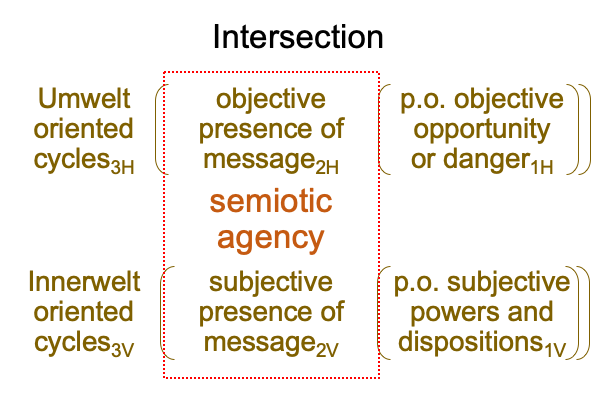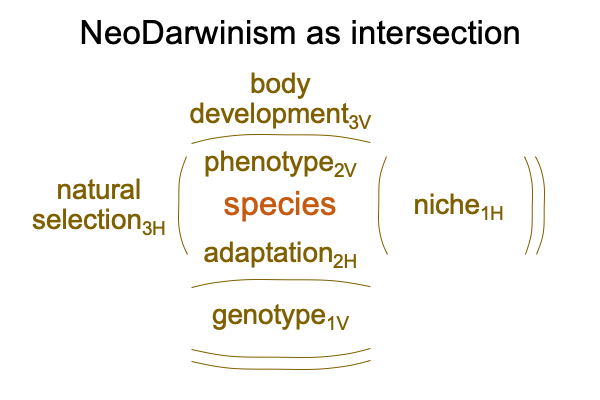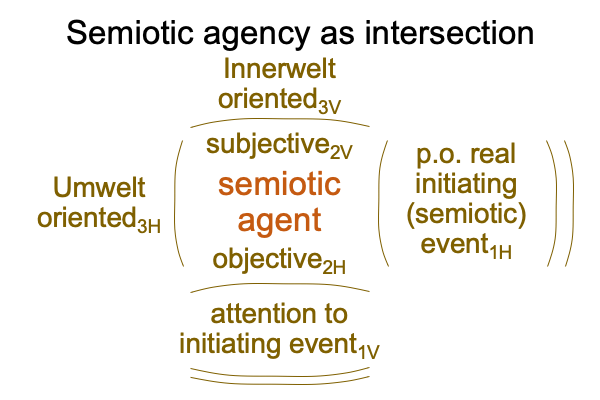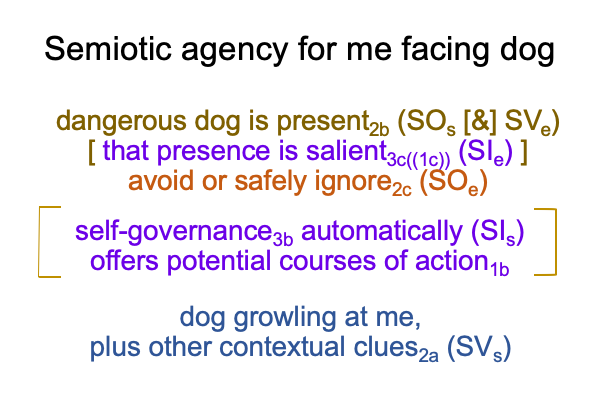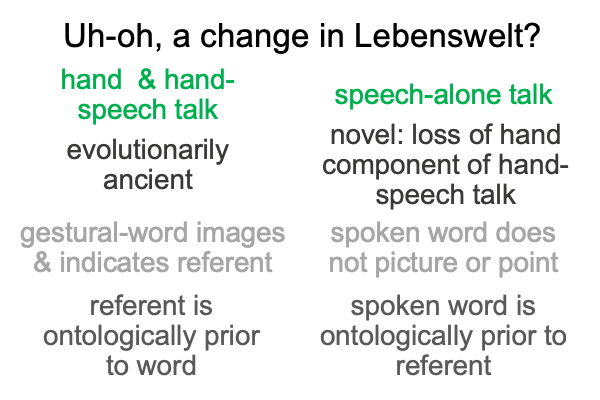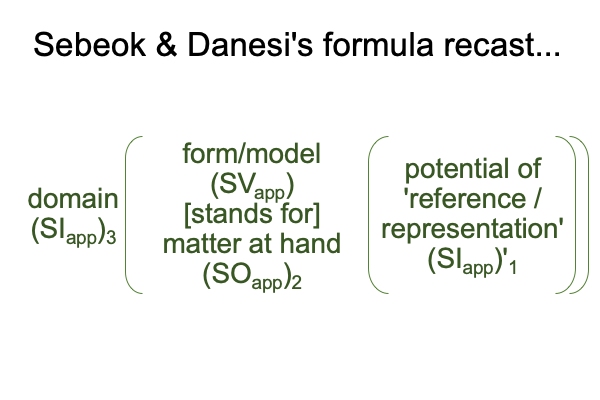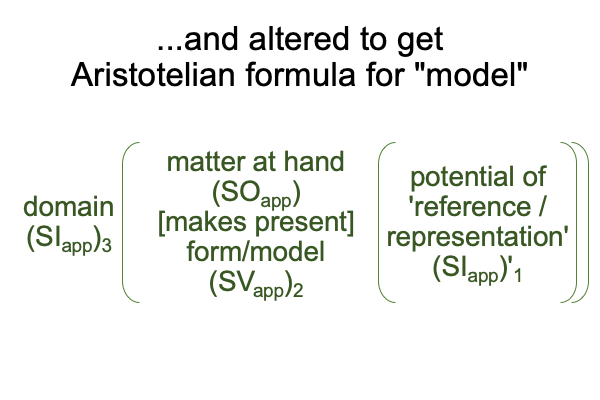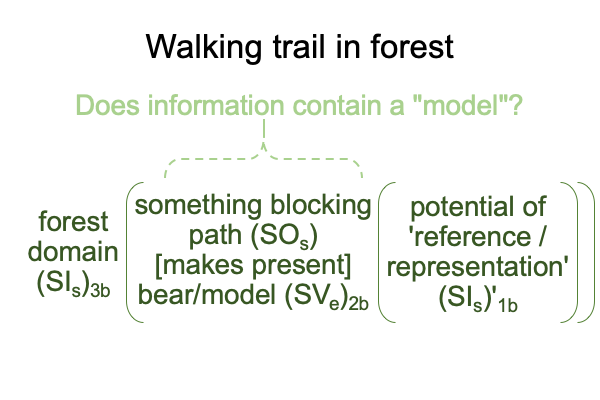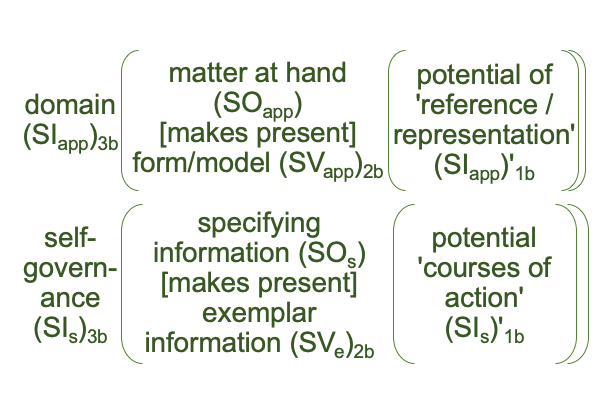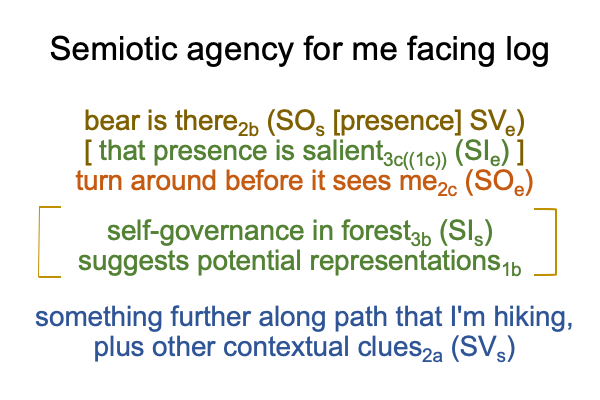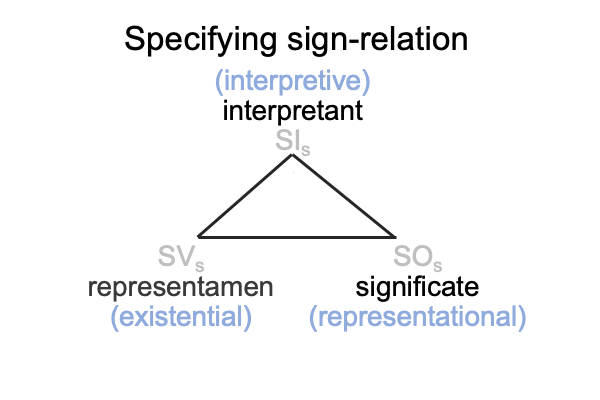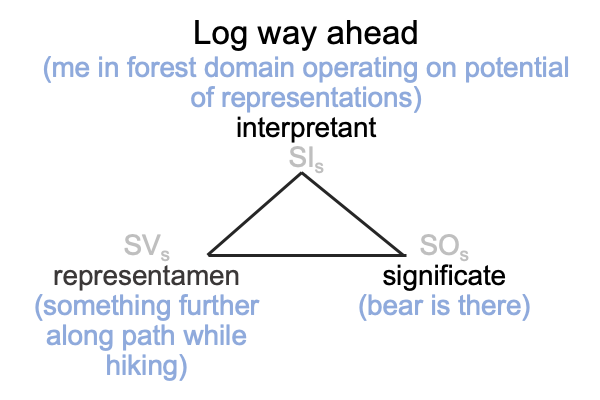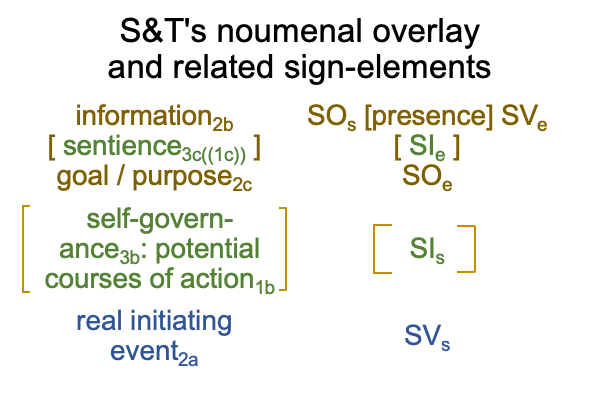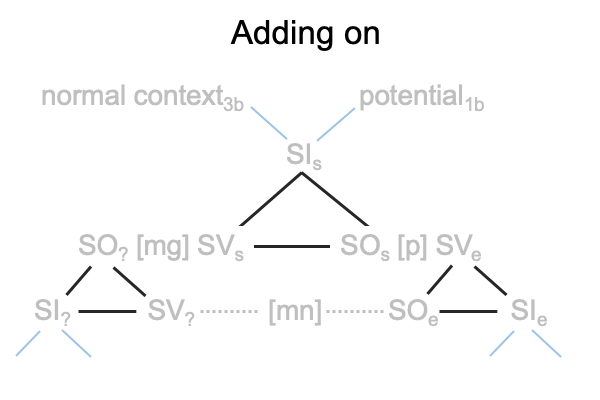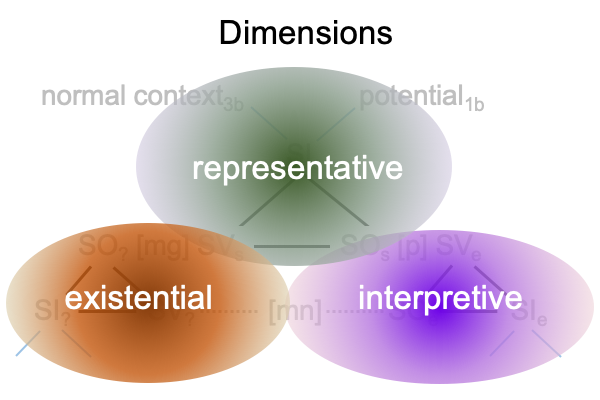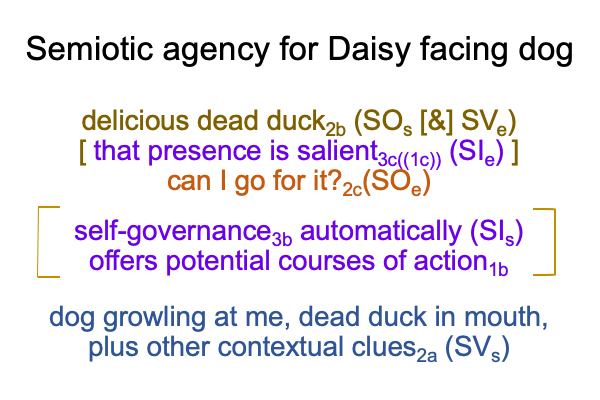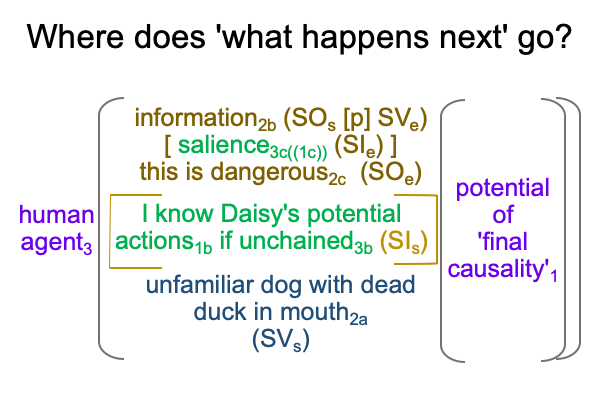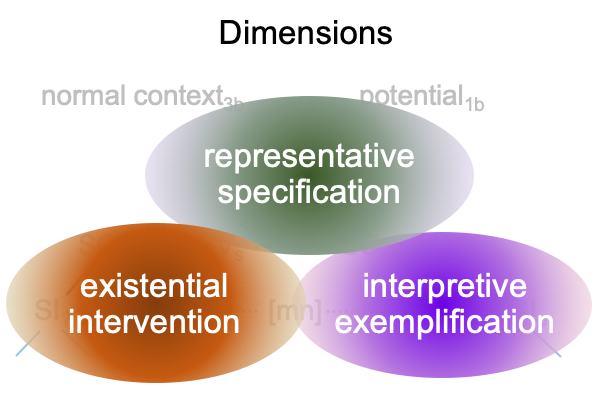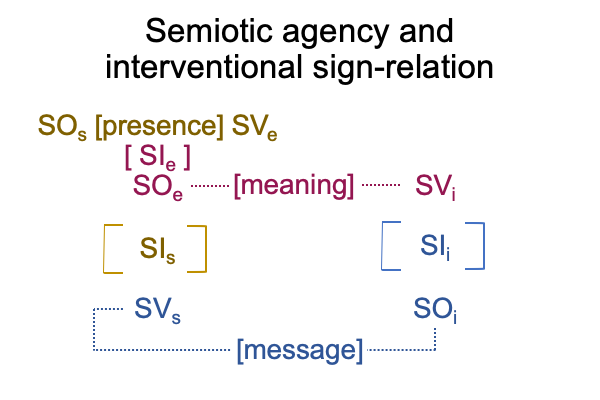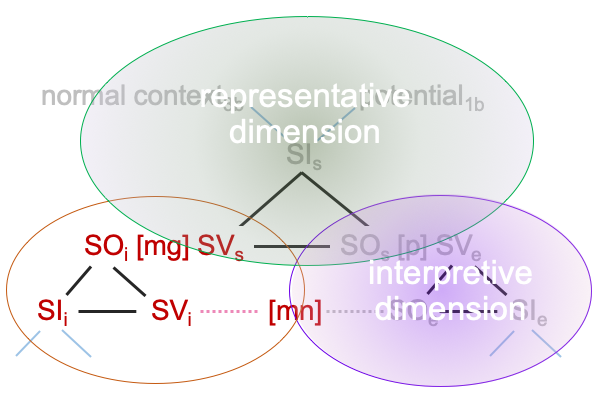Looking at Victoria Alexander’s Chapter (2024) “…The Emergence of Subjective Meaning” (Part 3 of 5)
0719 The first point (S) is stated in points 706 and 707. NeoDarwinism may be a factor in evolution. But, it is not the only one.
Maybe I went down the wrong rabbit-hole by raising the fact that neodarwinism is an intersection, because the lesson is not that intersections are mysterious (even though this lesson is true). The lesson turns out to be that the two-level interscopes of natural selection3b and body development3b recapitulate the specifying sign-relation in independent ways.
0720 Why is that lesson important?
Consider the second point in the conclusion (T): The single actuality, the living being, operates on the basis of self-reinforcing cycles.
What does that imply?
Ah, the author shifts the reader’s focus in an unexpected manner.
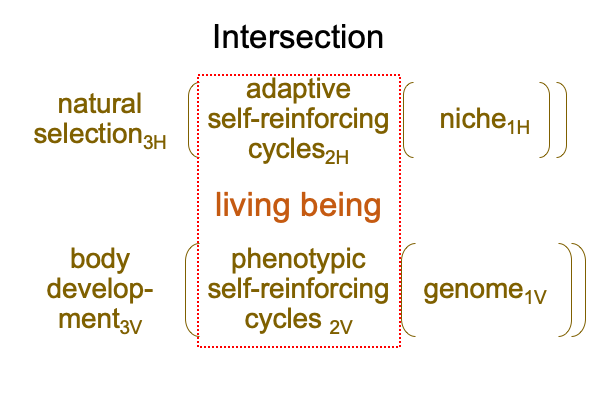
Living being2 is the intersection of two actualities.
For non-human agency, self-reinforcing cycles are both adaptive and phenotypically expressed.
0721 What is natural selection selecting for? Self-reinforcing cycles exploit opportunities and avoid dangers in regards to real initiating (semiotic) events. If I drop a 2% glucose solution in the center well of a petri-dish containing a maze, the slime mold on the periphery of the dish will start making its way through the maze. Glucose signals opportunity.
What is body development selecting for? Self-reinforcing cycles allow the slime mold to move. Also, receptors allows the slime mold sense a glucose gradient. Plus, when the slime mold hits a wall and has to backtrack, a slime mold can deposit a chemical agent that says, “I’ve been here before.” Yes, the slime mold is using its tools to solve the maze.
0722 So, how does this change of focus manifest when I return to the Sharov and Tonnessen noumenal overlays?
To me, self-reinforcing cycles replaces natural selection3b because the operations of these cycles3b pursue objective opportunities1b.
The adaptive presence2b is slime mold moving towards the source of glucose2a. Glucose2a (SVs) sends a message, meaning food2c (SOe).
0723 Here is a picture.
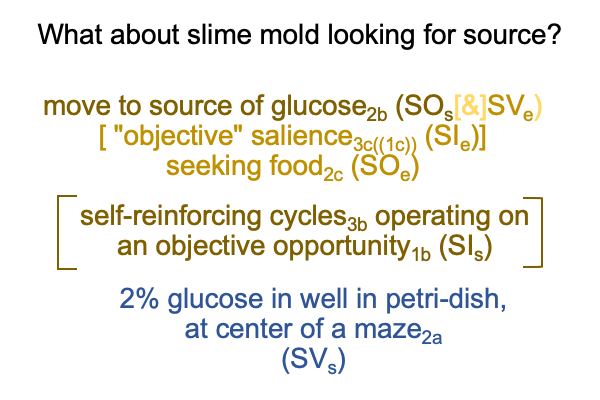
0724 Yes, the slime mold tries to find a way to the source of glucose (SOs) because glucose (SVs) objectively means food (SOe).
Why do I say, “Objectively.”?
In the introduction, section 15.1, the author distinguishes between objectivity and subjectivity. Here, the presence of glucose is objective (SVs). So is the reality that glucose means food (SOe).
Indeed, the biosemiotician considers these (SVs, SOs [&] SVe, SOe) to be the bases of phenomena. Observations related to these phenomena go into modeling [the self-reinforcing cycles], as well as [objective salience], that is [SIs] and [SIe], respectively.
The author’s shift of focus, along with the example, transfers the concept of adaptation2b, within the normal context of natural selection3b and arising from a niche1b, into the milieu of semiotic agency. The shift may be rhetorical, but it is effective nonetheless. Adaptations go with the objective world, that is, the Umwelt as the world of signs.
0725 Well, then, what about “subjectivity”?
Well, maybe “subjectivity” can be called “relative objectivity”.
Relative to what?
The slime mold in the petri-dish.
0726 Here is a picture.
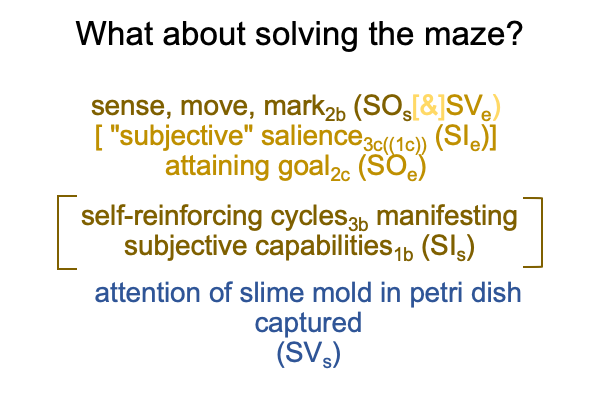
0727 “Subjective” is the right word in so far as, from a modern point of view, “subjective” means “self”. The scholastics offer a different view, “subjective” means “the subject that has the attention of the self”. Indeed, the latter view associates to the real initiating (semiotic) event (SVs).
As before, capturing attention of a slime mold in a petri dish2a (SVs) stands for its sensing, moving and marking2b(SOs) in regards to self-reinforcing cycles3b manifesting the slime mold’s subjective capabilities1b (SIs). Plus, the exemplar sign-relation is now relevant. The goal2c is to solve the maze (SOe) that the researcher has imposed.
0728 And, that raises the question, “If the slime mold were to be conscious, what would it be thinking?”
I suspect that the answer would be the objective opportunity and its salience.

